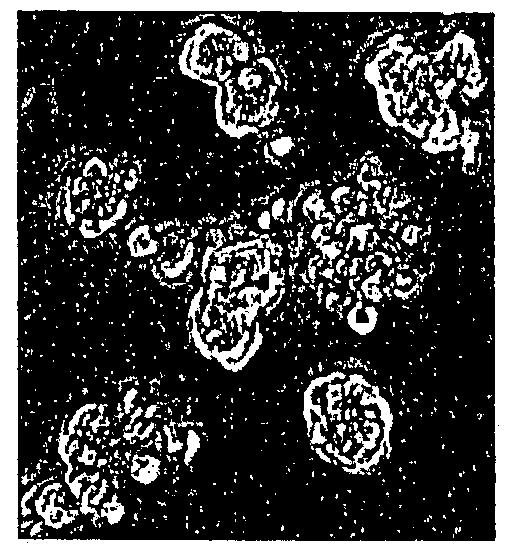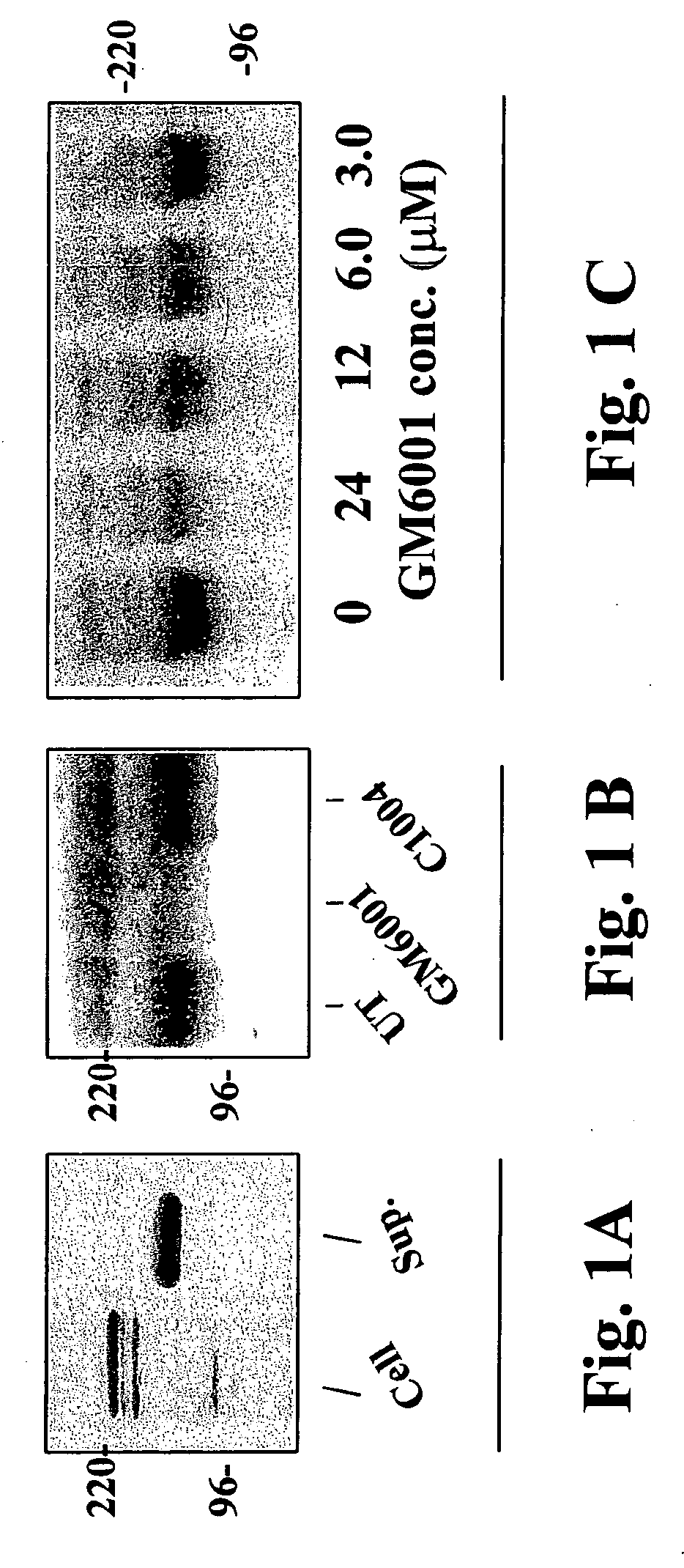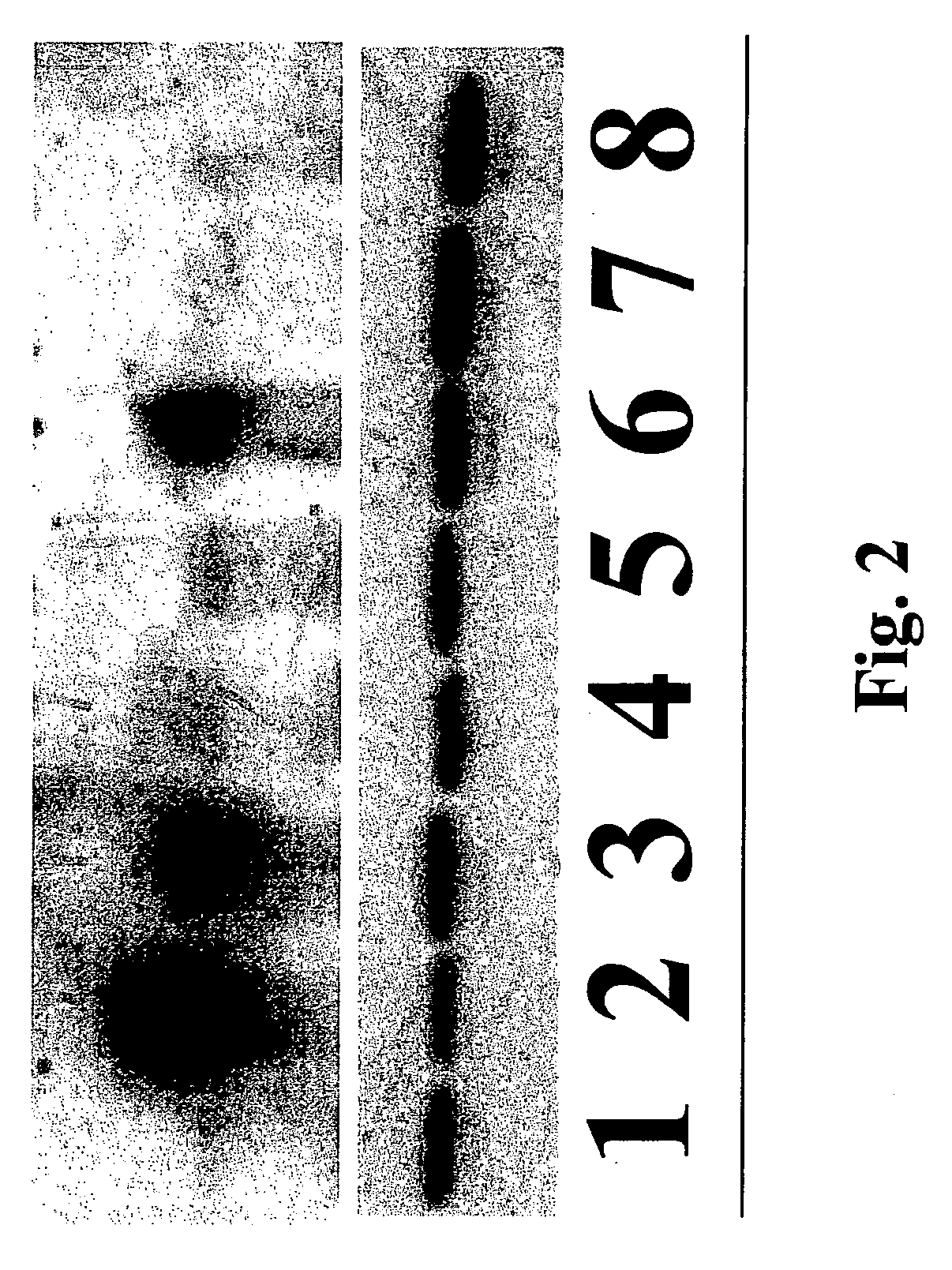Design of novel drug screens based on the newly found role of dystroglycan proteolysis in tumor cell growth
a dystroglycan and proteolysis technology, applied in the direction of instruments, biological material analysis, measurement devices, etc., can solve the problems of abnormal growth, cell disorganization and sometimes invasive, many tumor cells lack normal -dystroglycan on the surface, etc., to suppress the abnormal growth of tumor cells
- Summary
- Abstract
- Description
- Claims
- Application Information
AI Technical Summary
Benefits of technology
Problems solved by technology
Method used
Image
Examples
example 1
Assays of Dystroglycan Proteolysis Through Detection of α-Dystroglycan Shed from Cell Surface
[0041] Cleavage of α-dystroglycan was detected using cultured cells that cleave and shed dystroglycan from the cell surface. Dystroglycan cleavage was assayed for by immunoblotting to detect the presence of dystroglycan fragments in the medium of cultured cells. Mammary carcinoma cell lines SCg6 or TCL1 were cultured in 10 milliliters (ml) DMEM / F12 medium supplemented with 2% fetal calf serum, 5 μg / ml insulin (Sigma Chemical Co., St. Louis, Mo.), and 50 μg / ml Gentamycin (UCSF Cell Culture Facility). The cells were allowed to grow to 80% confluence in 10 centimeter (cm) plastic tissue culture dishes. The cells were rinsed two times with phosphate-buffered saline (PBS) and the medium was then changed to 10 mls DMEM / F12 medium supplemented with insulin, and Gentamycin, but without added serum. The cells were incubated in this serum-free medium for 48 hrs, then this conditioned medium was harve...
example 2
Assays of Dystroglycan Proteolysis and Shedding Through Detection of Cell-Surface α- and β-Dystroglycan
[0043] Cultured cells were extracted for total protein and immunoblotted for both α- and β-dystroglycan. The ratio of α- to β- dystroglycan in each cell line measures the relative amount of α-dystroglycan retained (or lost) at the cell surface (FIG. 2). Cultured cell were extracted by completely removing the culture medium and adding RIPA extraction buffer [50 mM Tris pH 7.5, 150 mM NaCl, 1.0% NP-40, 0.5% deoxycholate, 0.1% SDS, protease inhibitor cocktail Set 1 from Calbiochem (San Diego, Calif.)] at 1.5 mls for a 10 cm culture dish. The dish containing cells and RIPA was frozen and thawed, then solubilized cells were scraped into an EPPENDORF tube and frozen and thawed a second time. This tube was spun in a microfuge at 13,000 rpm for 5 minutes to pellet any insoluble material, and the supernatant was transfer to a fresh tube. The protein concentration was assayed before adding ...
example 3
Restoration or Enhancement of Dystroglycan Function in Carcinoma Cells Through Treatment with Metaloproteinase Inhibitors
[0044] Dystroglycan function reduces the growth potential and induces polarity in normal mammary epithelial cells exposed to basement membrane proteins. As demonstrated in Example 5, restoration of dystroglycan function can induce these events in some tumor cell lines. Because dystroglycan function is lost in part by proteolytic shedding, inhibition of dystroglycan shedding can restore or enhance dystroglycan function. Therefore, restoration of dystroglycan function can be used as an assay for inhibitors of the metaloproteinase(s) cleaving and shedding α-dystroglycan. Carcinoma cell lines, including the HMT-3522-T4 cells and MDA-MD-231 cells, were cultured within the 3-dimensional basement membrane (3-D BM) assay. To accomplish this the cells were trypsinized from routine cell culture, washed once with DMEM / F12 medium, treated with soybean trypsin inhibitor, wash...
PUM
 Login to View More
Login to View More Abstract
Description
Claims
Application Information
 Login to View More
Login to View More - R&D
- Intellectual Property
- Life Sciences
- Materials
- Tech Scout
- Unparalleled Data Quality
- Higher Quality Content
- 60% Fewer Hallucinations
Browse by: Latest US Patents, China's latest patents, Technical Efficacy Thesaurus, Application Domain, Technology Topic, Popular Technical Reports.
© 2025 PatSnap. All rights reserved.Legal|Privacy policy|Modern Slavery Act Transparency Statement|Sitemap|About US| Contact US: help@patsnap.com



